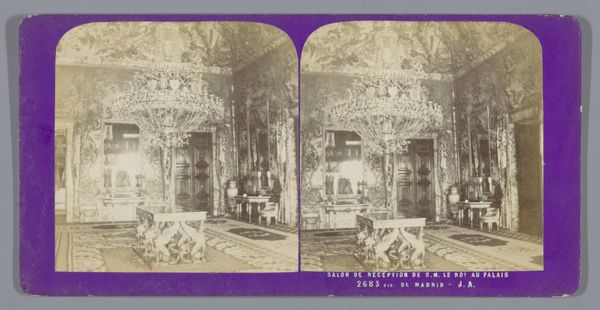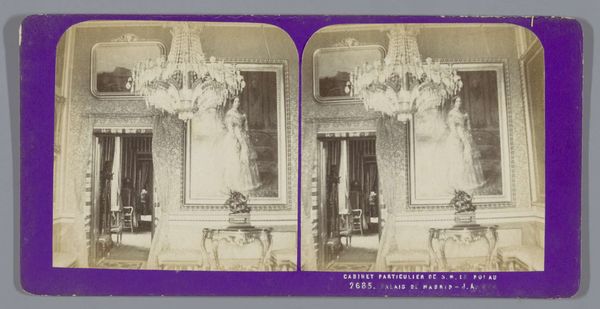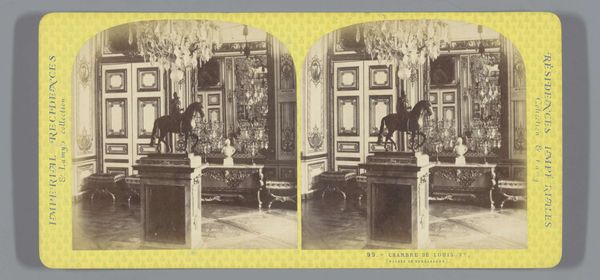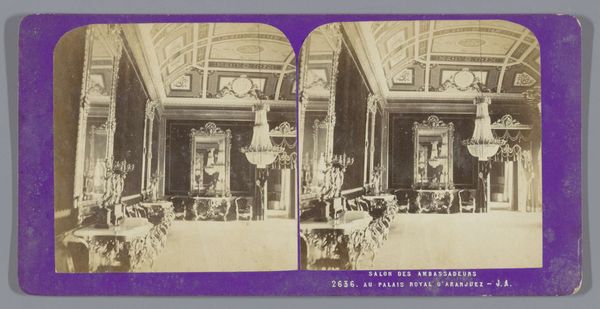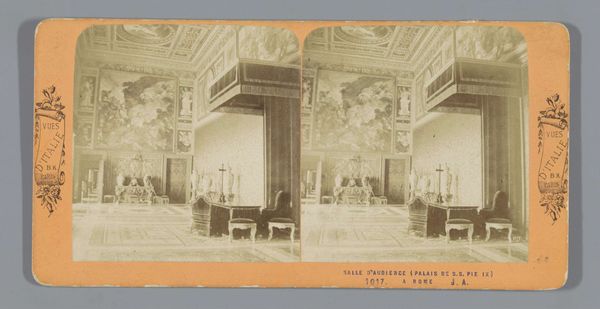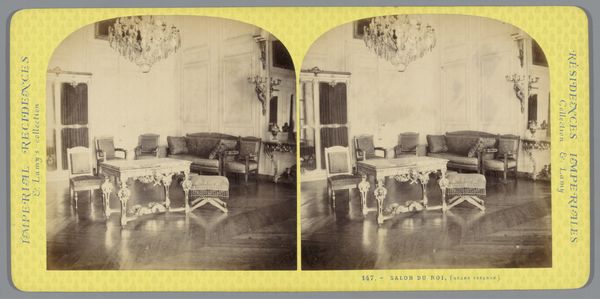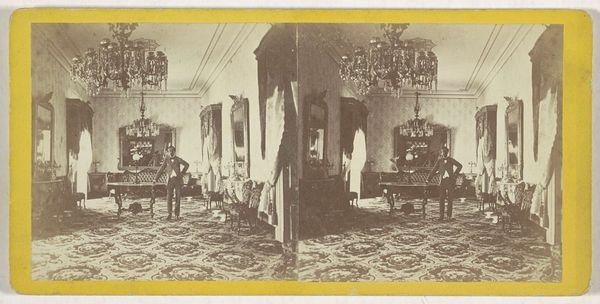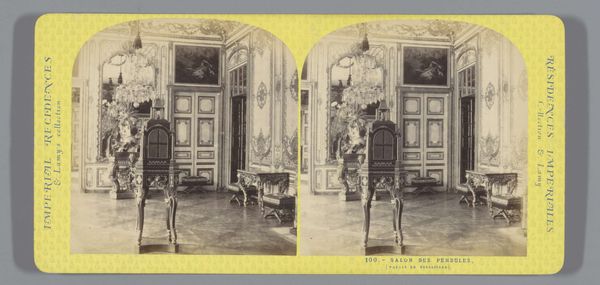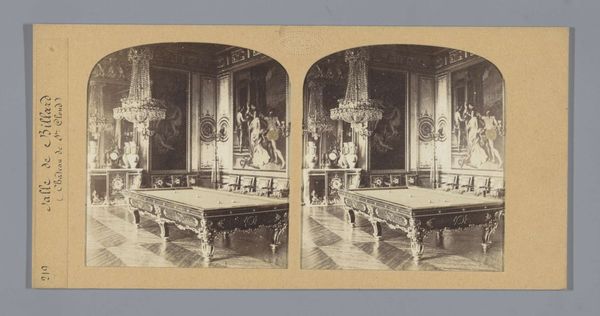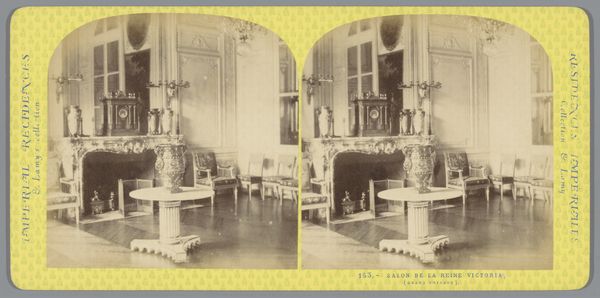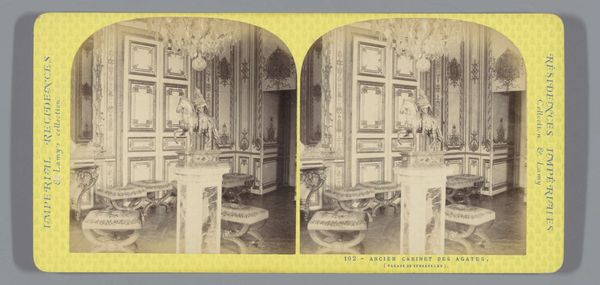
Dimensions: height 85 mm, width 170 mm
Copyright: Rijks Museum: Open Domain
Curator: This remarkable photograph is titled "Werkkamer van de koningin in het Koninklijk Paleis van Aranjuez," or "Queen's Working Room in the Royal Palace of Aranjuez," created sometime between 1862 and 1876 by Jean Andrieu. It is so faint, I'm dying to ask, what impressions bubble up for you when you first glance at this space? Editor: It whispers opulence… the very controlled arrangement, that immense chandelier, the heavy drapery. Though monochrome, it evokes luxury and an incredible stillness. Almost frozen in time, but still somehow stuffy. It must have felt that way to the queen. Curator: Indeed. Knowing this is a stereoscopic print, intended to create a 3D effect when viewed through a special device, really accentuates that staged stillness you noticed. The furniture and objects—the writing desk front and center, the artwork on the walls—feel intentionally placed to project a very specific image of royal industriousness, you see. All designed by court artisans, who may not have been considered 'artists'. Editor: The materiality tells its own tale. Think about the origins of the silk in those curtains, the wood of that desk—colonial exploitation likely fueled this conspicuous consumption. The photograph, produced en masse as a print, oddly democratizes the view. The masses can gaze upon royal ‘intimacy’, without addressing the power imbalance inherent in viewing it. Curator: I love how that sense of access clashes with the queen’s very solitary existence. You can see these repeated forms; that almost mathematical composition feels like her trying to structure and compartmentalize her life in that working room. It makes you wonder if being that still was an actual act of protest against being scrutinized, or to cope with its alienation... Editor: And the labor needed to produce such photographs! The photographers lugging equipment, the darkroom workers toiling over the prints… The camera may have captured the Queen’s ‘workspace,’ but it completely eclipses the work done by others. Photography itself was dependent on raw materials. Curator: Absolutely, what you remind us to appreciate is what the picture frame omits. I won't ever just consider only this place of supposed freedom when viewing Andrieu's scene! Editor: Exactly! This makes one stop to think how we engage with power, now.
Comments
No comments
Be the first to comment and join the conversation on the ultimate creative platform.
